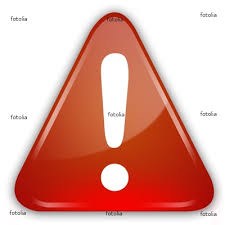May I Have Your
Attention Please...Please?

By - Dr. Jared Horvath, MD
-
- Attention Defined
3 -
- An Attentional Model
4 -
- Focused & Sustained Attention
5 -
- Selective & Alternating Attention
6 -
- Divided Attention
7 -
- Final Question
8
 ATTENTION
ATTENTION 
Simply defined, attention is the process of selective concentration upon a particular aspect of the environment whilst maintaining ignorance of most other aspects. Many scientists believe attention is an important precursor to the proper activation of all other cognitive functions.
In the classroom, attention is required to focus on relevant information whilst filtering out extraneous information.

An Attentional Model
There are many different ways to categorize and model the different facets of attention. One of the most popular is called the Sohlberg and Mateer Heirarchical Model. This model was developed to test the recovery and development of attentional function in long-term coma patients (after they have awoken, of course).
Although developed for clinical use, this model has proven useful in evaluating attentional skills in the common population as well - including stdents.
The model consitst of a 5 step hierarchy . We shall review each separately.
Do you understand?


Level 1: Focused Attention
Focused attention is the ability to respond directly to specific visual, auditory, or tactile stimuli . In medicine, these stimuli are presented by the treating physician. In the classroom, thse stimuli are presented by the teacher.

Level 2: Sustained Attention
Sustained attention is the ability to maintain a consistent behavioral response during continuous and repetitive activity. In the classroom, sustained attention is important to remain focused throughout a 40 minute lesson.


Level 3: Selective Attention
Selective attention refers to the capacity to maintain a behavioral or cognitive focus in the face of distracting or competing stimuli. In other words, this level is the ability to maintain attention in a distractable environment.
In this classroom, this skill can be found in the ability to maintain focus on the lesson whilst proximal peers chatter, pass notes, and otherwise act-up.

Level 4: Alternating Attention
Alternating attention references an individual's capacity to shift focus and alternate between various tasks requiring different cognitive talents. This level of attention has also been called "mental flexability."
To test this capacity, Doctors often ask their patients to alternate (in 30 second incriments) between a memorization task, a mental rotation task, and a color reference task.

.jpg)
Final Question
Now that you understand the different types of attention, it's time to think about the obstacles the attention network must face.
Consider the three friends you've made whilst reading this book: Fit Granny, Emma, and Alex.
In regards to the brain's attentional network, what roles do you think each of these three characters play? Do they all represent directed attention - or do they represent different facets of what constitutes attention?

